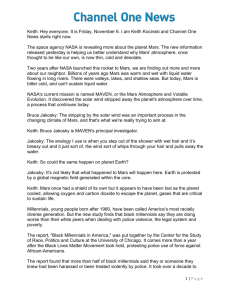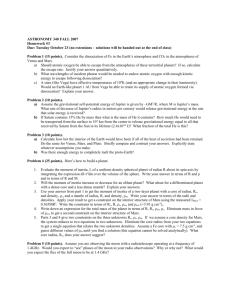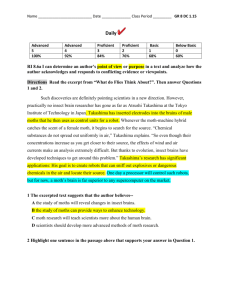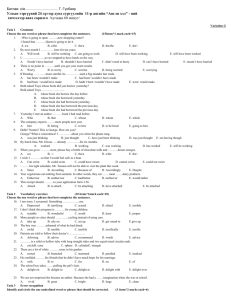October 6, 2015
advertisement
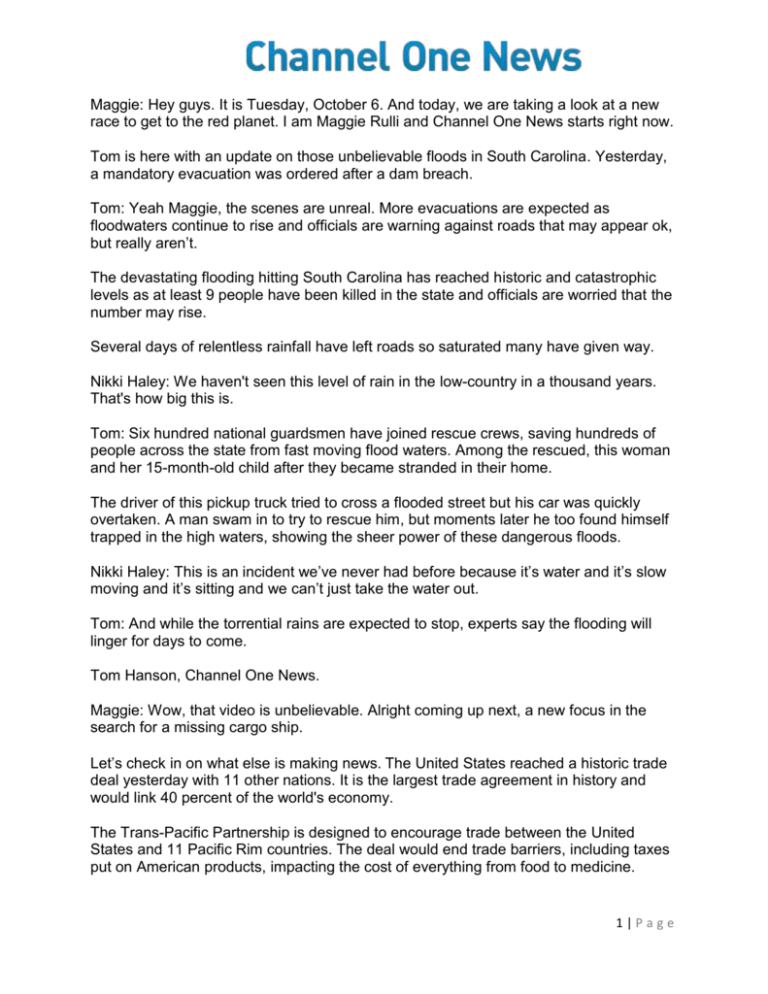
Maggie: Hey guys. It is Tuesday, October 6. And today, we are taking a look at a new race to get to the red planet. I am Maggie Rulli and Channel One News starts right now. Tom is here with an update on those unbelievable floods in South Carolina. Yesterday, a mandatory evacuation was ordered after a dam breach. Tom: Yeah Maggie, the scenes are unreal. More evacuations are expected as floodwaters continue to rise and officials are warning against roads that may appear ok, but really aren’t. The devastating flooding hitting South Carolina has reached historic and catastrophic levels as at least 9 people have been killed in the state and officials are worried that the number may rise. Several days of relentless rainfall have left roads so saturated many have given way. Nikki Haley: We haven't seen this level of rain in the low-country in a thousand years. That's how big this is. Tom: Six hundred national guardsmen have joined rescue crews, saving hundreds of people across the state from fast moving flood waters. Among the rescued, this woman and her 15-month-old child after they became stranded in their home. The driver of this pickup truck tried to cross a flooded street but his car was quickly overtaken. A man swam in to try to rescue him, but moments later he too found himself trapped in the high waters, showing the sheer power of these dangerous floods. Nikki Haley: This is an incident we’ve never had before because it’s water and it’s slow moving and it’s sitting and we can’t just take the water out. Tom: And while the torrential rains are expected to stop, experts say the flooding will linger for days to come. Tom Hanson, Channel One News. Maggie: Wow, that video is unbelievable. Alright coming up next, a new focus in the search for a missing cargo ship. Let’s check in on what else is making news. The United States reached a historic trade deal yesterday with 11 other nations. It is the largest trade agreement in history and would link 40 percent of the world's economy. The Trans-Pacific Partnership is designed to encourage trade between the United States and 11 Pacific Rim countries. The deal would end trade barriers, including taxes put on American products, impacting the cost of everything from food to medicine. 1|Page The agreement also sets labor and environmental standards and protects businesses intellectual property, inventions like software or technology. President Obama says the deal levels the playing field for American workers, farmers and manufacturers so they can export more goods. Congress still needs to approve the deal. But the president is in a rare position, having more Republicans support the deal than Democrats in his own party. Labor unions and environmentalists also argue that the deal favors big business instead of working Americans. The U.S. Coast Guard says the cargo ship that disappeared during Hurricane Joaquin has likely sunk near the Bahamas. Now all efforts are focused on finding survivors. Family members of the 33 people aboard the El Faro are holding out hope. Mark Fedor: We’ve modified our search efforts to focus more on potential people in the water, life boats and life rafts. Maggie: The 790 foot ship lost power in heavy seas Thursday, and its crew radioed that it was taking on water. Marine researchers say there is a chance passengers could be found if they survived the violent waves. But time is running out. One of El Faro's two lifeboats was found Sunday, badly damaged. Search crews also found a life ring, and human remains inside one of the ship's survival suits. Alright coming up, Keith Kocinski is taking over and taking us out of this world. Keith: Hey everyone. It is Tuesday July 20, 2027. And today we celebrate a special day. After six months in space, American, Laurel Kaye is the first person to step foot on Mars. Laurel Kaye: We’ve done something that has never been done before. And even though it might be me who is stepping out here, it is not really just me, it’s everybody. Keith: Alright, alright. It may only be 2015, and no, humans haven't set foot on the red planet just yet. But last week NASA found evidence of liquid water on the Martian surface, and a human mission may be right around the corner. Twenty-two-year-old Laurel Kaye from Long Island, New York wants to be the first real life Martian. Laurel Kaye: I’ve always been fascinated by the stars and by the universe. When I was a baby my first word was ‘moon.’ So in high school, I decided that I wanted to be one of the first people in Mars. 2|Page Keith: Laurel was selected as a finalist out of hundreds of thousands of applicants willing to put their life on the line to be a space pioneer. It is part of the proposed Mars One project, a concept of Bas Lansdorp, a 38-year-old Dutch entrepreneur. The goal, to send 24 humans to the red planet by 2026. Laurel: What interests me most about going to Mars is really just the prospect of going somewhere where nobody has ever gone before. Keith: And if it actually happens, Laurel’s ticket will be just one-way. Are you nervous of the possibility of never coming back to Earth? Laurel: I'm worried about equipment failure or troubles during take-off and landing, for sure. But when I’m actually there and really pursuing my dream, that doesn't make me worried not to return to Earth. Keith: What will you miss most about Earth? Laurel: I will definitely miss being able to talk to my friends and family in person. Beyond people though, I will definitely miss being able to walk and run love outside and just being around in nature. Keith: While the Mars One project has gotten a lot of attention, most scientists in the field say it is not very realistic. But the project is one of several, a renewed interest in sending humans to Mars with hopes of finding clues to the planet's mysteries: did it once have life, and can humans one day call Mars home? These questions, now sparking a new space race. The first space race started in the 1950s between the U.S. and its rival the Soviet Union. The Soviet Union was the first to launch a satellite, Sputnik, into space and the first to shoot a living creature into space. But the United States was determined to win the competition. And in 1969, the U.S. became the first country to put a man on the moon. And now, nearly 50 years later, our sights are set on our neighbor planet, one rock over in the solar system. President Barack Obama: By the mid-2030s, I believe we can send humans to orbit Mars and return them safely to Earth. Keith: This time, the players in this game of planetary leap frog are private organizations, like Mars One, Inspiration Mars Foundations and Space –X, led by billionaire entrepreneur Elon Musk. But there is one group with a rich history of space travel that plans to embark on their 3|Page own journey to our solar neighbor, the National Aeronautics and Space Administration. You might know them as NASA. Male: It’s the beginning of humanity leaving the Earth and exploring another planet. The mission to Mars will be the greatest space adventure that awaits humans in the 21st century. Keith: Nasa has been studying the red planet for decades, sending probes and rovers to collect samples, data, and send back pictures of the Martian surface. But propelling humans to a place 140 million miles away is no easy task. It takes about three days to get to the moon, but Mars is up to a 1,000 times further. Experts say the entire trip could take 2 1/2 years. But how do we get humans and all of the supplies off the Earth, through the dangers of deep space, to land on the red planet? And how does the crew survive on a planet with no food, water or breathable air? And then, how will the crew get back? Pascal Lee: A human mission to Mars is technically possible, but we are not quite ready for it yet. There is some key equipment that we really need to put together, like the spacesuit, that we’re going to need in order to be productive explores. Keith: These questions remain unanswered, but NASA is currently developing new technologies to turn what is now science fiction into science fact. Many are convinced it is not a matter of “if” we will get to mars, but “when.” Laurel: We need people to be scientists and astronauts and just dreamers. We just need people that together will do something that nobody else has done before. Let's be the generation that sends people to Mars. Maggie: Over the next couple days, we are going to check out what NASA’s doing to actually get astronauts to Mars and back home safely. But if you just can’t wait and need your next dose of Mars madness right now, head on over to Channelone.com where you can see some behind the scenes pics and a blog post from Keith. Alright well, we are out. But we cannot wait to see you right back here tomorrow! 4|Page



